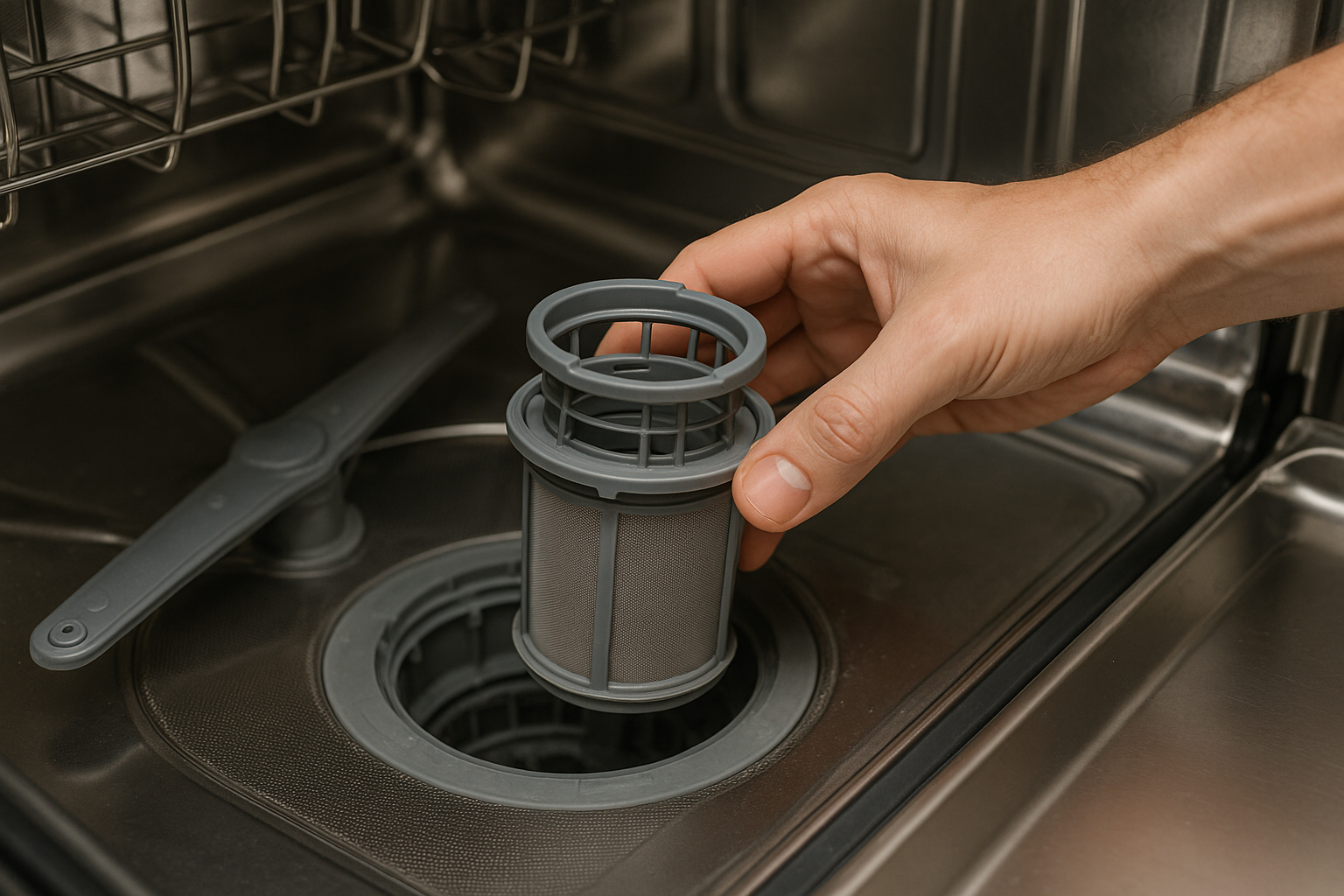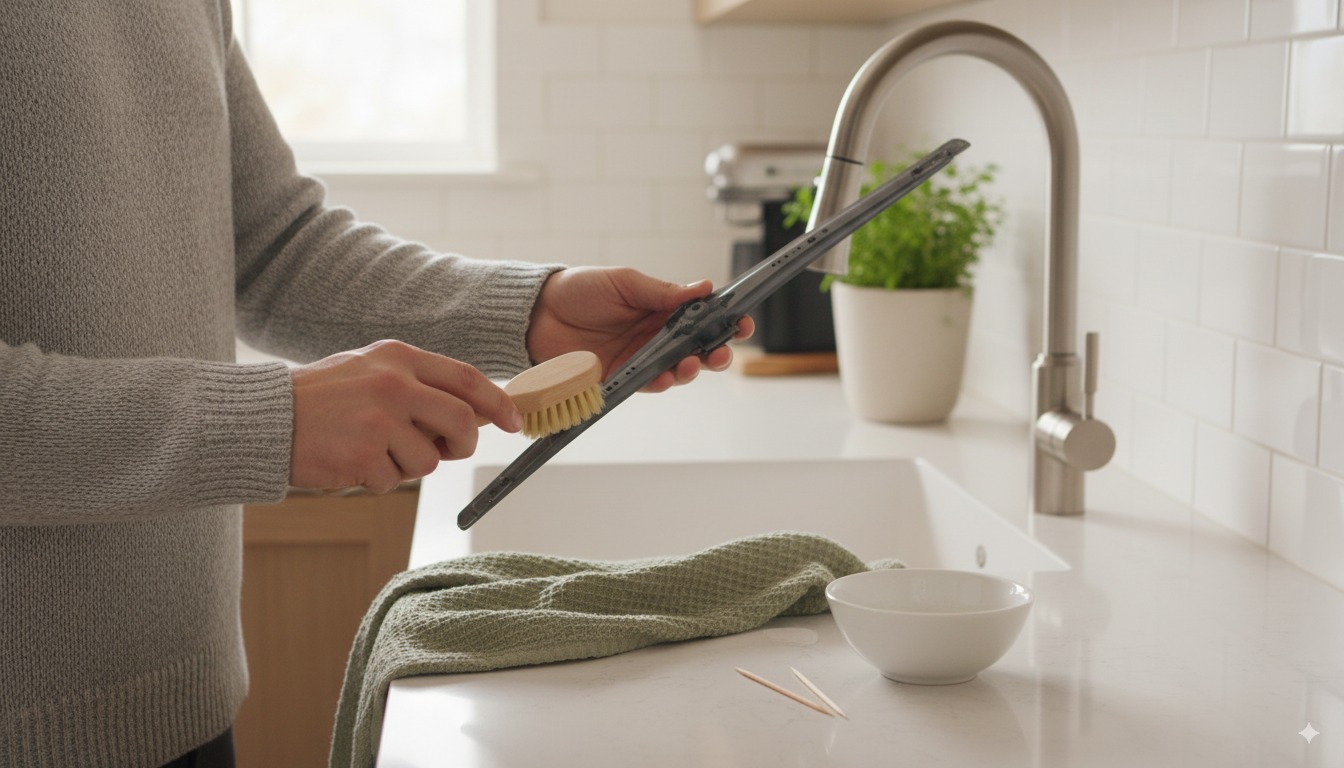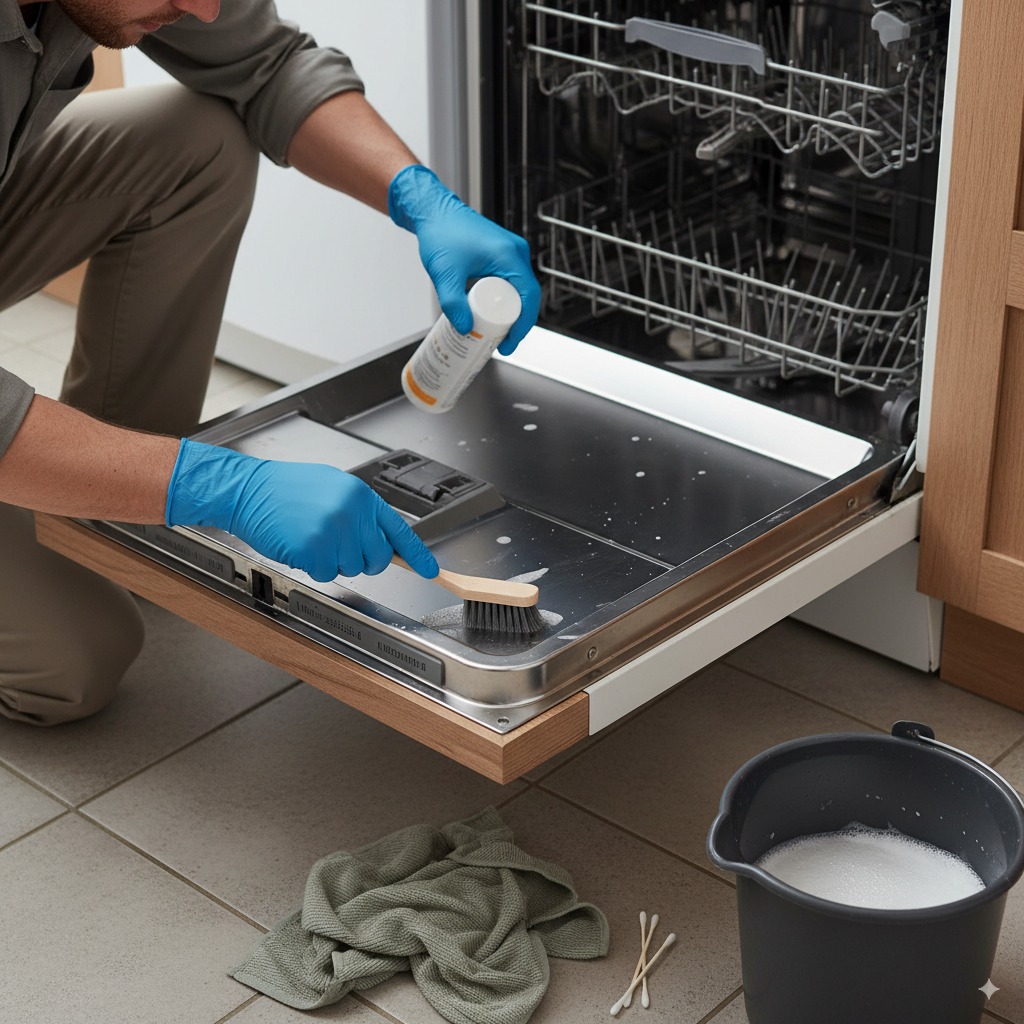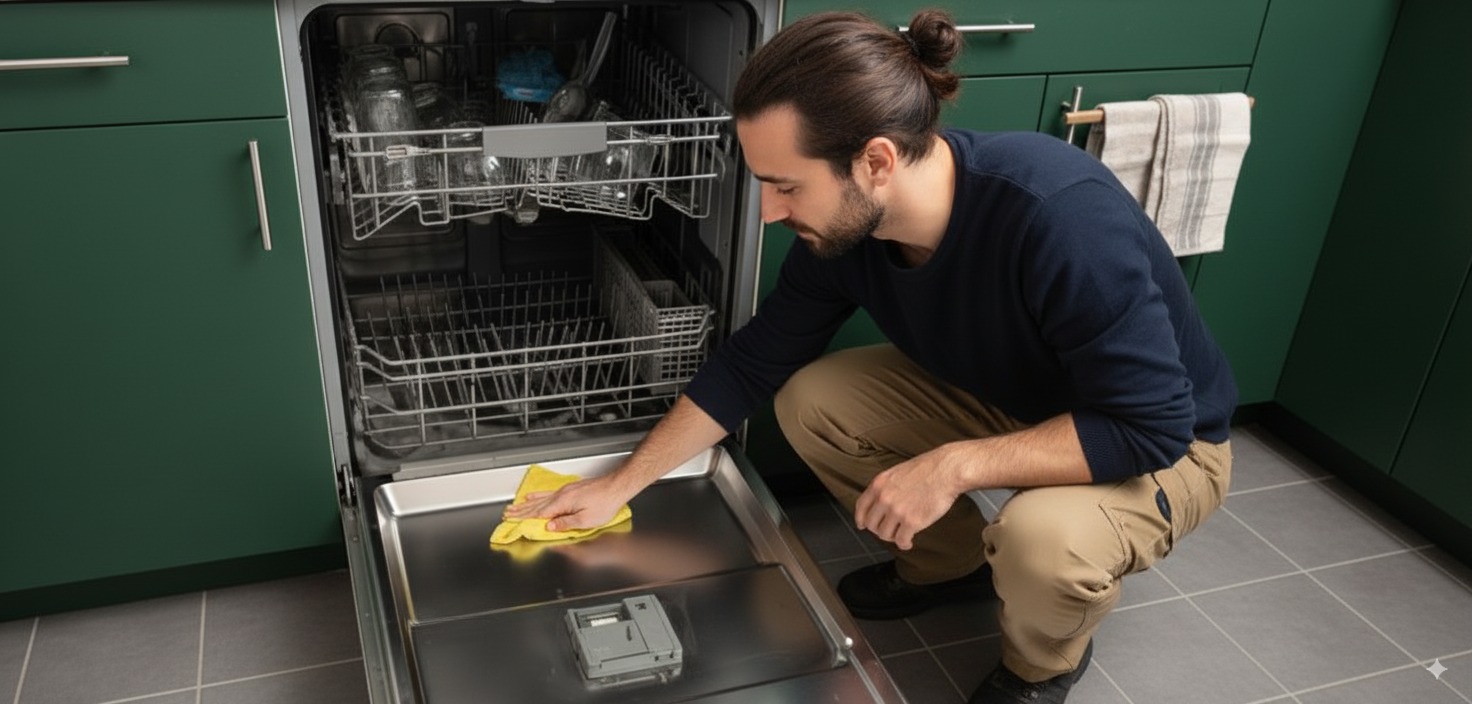The Monthly Dishwasher Deep Clean
Most of us pop dishes in the dishwasher and forget about it, trusting our trusty appliance to do its job. But like all good relationships, a bit of regular attention goes a long way. Your dishwasher works hard cleaning hundreds of plates, glasses, and utensils each month, so returning the favour with a monthly deep clean will keep it running efficiently and extend its lifespan considerably.
A well-maintained dishwasher doesn't just clean better—it saves money on repairs, prevents unpleasant odours, and ensures your dishes come out sparkling every time. The good news is that most monthly maintenance tasks are straightforward and require no special skills, just a bit of time and the right approach.
A comprehensive monthly maintenance routine keeps your dishwasher running at peak performance
Clean and Replace the Filter
Remove the lower rack to access the filter easily. Most modern dishwashers have a cylindrical filter that twists to unlock—give it a quarter turn anticlockwise and lift it out. Some models have a two-part system with an upper and lower filter assembly.
Rinse under hot running water to remove loose debris, then soak in warm, soapy water for 10-15 minutes. Use a soft-bristled brush or old toothbrush to gently scrub away stubborn food particles and grease buildup. Pay particular attention to the mesh sections where debris tends to accumulate.
Rinse thoroughly and check that all soap residue is removed before reinstalling. The filter should lock back into place with a satisfying click—if it still turns freely, it's not properly seated.

Deep Clean the Spray Arms
The spray arms are the workhorses of your dishwasher, spinning and distributing water throughout the tub. Over time, food particles, grease, and mineral deposits can clog the tiny holes, reducing water pressure and cleaning effectiveness.
Remove both spray arms—the lower one usually lifts out or twists off, while the upper arm typically requires unscrewing. Check your manual if you're unsure, as different models have different mechanisms.
Inspect each spray hole for blockages. Use a cocktail stick or toothpick to carefully clear any debris from the holes. Soak the arms in a vinegar solution (equal parts white vinegar and warm water) for 15-30 minutes to dissolve mineral deposits and grease buildup.
Scrub gently with a soft brush, paying attention to the pivot points where the arms rotate. Rinse thoroughly and test that the arms spin freely in your hands before reinstalling.

Tackle the Door Seals and Gaskets
The rubber seals around your dishwasher door are prime real estate for mould, mildew, and food debris. These areas don't get cleaned during regular wash cycles, making monthly attention essential for hygiene and proper door sealing.
Prepare a cleaning solution using equal parts white vinegar and warm water, or use a mild detergent solution. Wipe down all rubber seals around the door, paying particular attention to the bottom edge where debris tends to accumulate.
Use an old toothbrush to get into crevices and grooves where grime hides. For stubborn mould or mildew, make a paste from baking soda and water, apply it to affected areas, leave for 10 minutes, then scrub gently and rinse.
Check the door hinges and wipe them down as they don't get cleaned during regular cycles. Dry thoroughly with a clean cloth to prevent moisture buildup that encourages mould growth.

Run a Deep Cleaning Cycle
Even with regular filter and spray arm maintenance, your dishwasher's internal components need periodic deep cleaning to remove grease buildup, soap scum, and mineral deposits that accumulate over time.
Use a commercial dishwasher cleaner designed for monthly maintenance. These products are formulated to tackle grease and limescale in areas you can't reach manually. Place the cleaner in the empty dishwasher according to the manufacturer's instructions.
Alternatively, create a DIY solution: Place a dishwasher-safe bowl filled with white vinegar on the top rack and run a hot cycle. The vinegar will help dissolve mineral deposits and eliminate odours naturally.
Run the hottest cycle available to ensure maximum cleaning effectiveness. The combination of high temperature and cleaning agents will remove buildup from internal components, pipes, and the heating element.
Check and Refill Salt and Rinse Aid
In hard water areas across much of the UK, dishwasher salt is essential for preventing limescale buildup and ensuring proper cleaning performance. Many people forget about these reservoirs until problems arise.
Check the salt compartment (usually located next to the filter at the bottom of the tub). If the salt level is low or the indicator light is on, unscrew the cap and refill with dishwasher salt—never use table salt, which contains additives that can damage the water softener.
Top up the rinse aid dispenser if the level is low. This helps prevent water spots and aids drying. The dispenser is typically located on the inside of the door next to the detergent compartment.
Adjust settings if necessary. Many dishwashers allow you to adjust the water hardness setting and rinse aid dosage based on your local water conditions and results.
External Cleaning and Final Checks
Don't forget the outside of your dishwasher, which faces daily splashes and fingerprints. A clean exterior not only looks better but can also indicate how well you're maintaining the entire appliance.
Wipe down the exterior with a microfibre cloth and appropriate cleaner for your dishwasher's finish. Stainless steel models benefit from specialised stainless steel cleaners that prevent streaking.
Clean the control panel carefully, ensuring no moisture gets into the electronics. A slightly damp cloth is usually sufficient for most control panels.
Check for leaks around the base and door seals. Small puddles could indicate worn seals or blocked drains that need attention. Inspect the power cord and ensure connections are secure.
Leave the door slightly ajar after cleaning to allow air circulation and prevent moisture buildup that can lead to unpleasant odours.
Troubleshooting Common Issues
Monthly maintenance is also the perfect opportunity to address minor issues before they become major problems.
If dishes aren't coming out clean: Check the spray arms for blockages, ensure you're using the correct amount of detergent, and verify that the water temperature is hot enough (around 60°C is ideal).
If there's a persistent smell: Focus on cleaning the filter more thoroughly, check for trapped food debris in hidden areas, and run an additional vinegar cycle.
If you notice white residue on dishes: This typically indicates hard water issues. Increase the dishwasher salt, adjust the water hardness setting, or consider using a different detergent formulated for hard water.
Creating Your Monthly Maintenance Routine
The key to successful dishwasher maintenance is consistency. Set a monthly reminder on your phone or mark it on your calendar—the first Saturday of each month works well for many households.
Gather your supplies in advance: dishwasher cleaner or white vinegar, soft brushes, microfibre cloths, and replacement salt if needed. Having everything to hand makes the job quicker and more likely to happen.
Start with the messiest jobs first—filter and spray arm cleaning—then move to the cleaner tasks like wiping down surfaces. This prevents you from dirtying already-cleaned areas.
Take photos of how components should be reassembled if you're not confident about getting everything back together correctly. Modern smartphones make this easy and can save confusion later.
With this monthly routine, your dishwasher will reward you with consistently excellent cleaning performance, fewer repairs, and the satisfaction of knowing you're getting the most from your investment. After all, a well-maintained dishwasher is not just an appliance—it's your reliable kitchen partner that deserves a bit of TLC in return.
